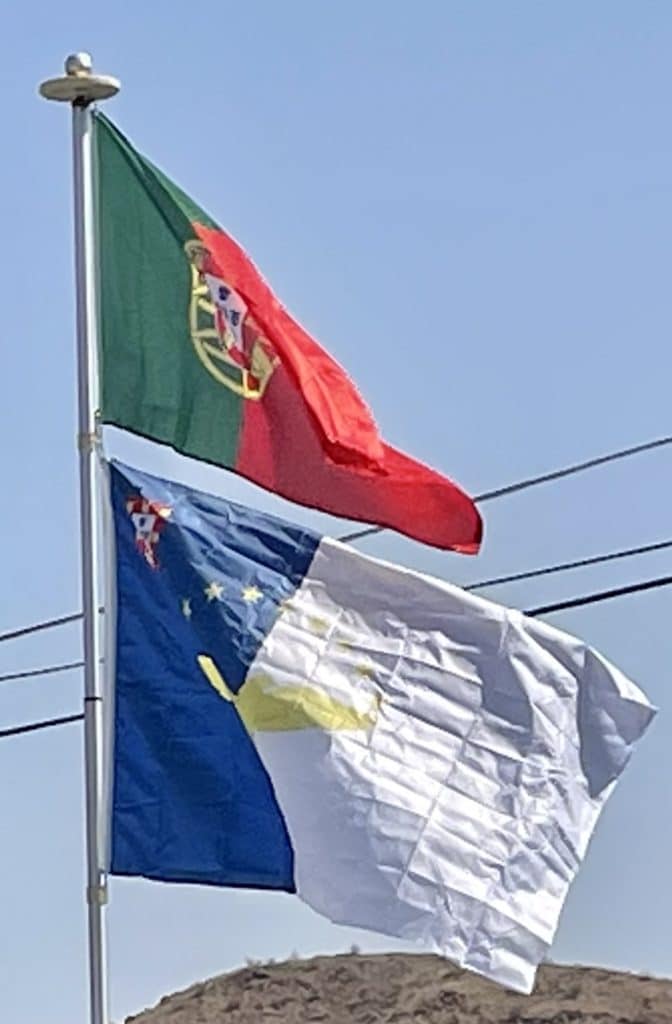In 1943, during World War II, the Portuguese ruler António de Oliveira Salazar leased air and naval bases in the Azores to Great Britain. This was a key turning point in the Battle of the Atlantic, enabling the Royal Air Force, the U.S. Army Air Forces, and the U.S. Navy to provide aerial coverage in the Mid-Atlantic gap. This helped them to protect convoys and to hunt hostile German U-boats. In 1944, the U.S. constructed a small and short-lived air base on the island of Santa Maria. In 1945, a new base was constructed on the island of Terceira, named Lajes Field. This air base is a joint American and Portuguese venture. Lajes Field continues to support the American and Portuguese Armed Forces.

Following the Carnation Revolution of 1974, which deposed the Estado Novo dictatorship in Lisbon, Portugal and its territories across the world entered into a period of great political uncertainty. The Azorean Liberation Front attempted to take advantage of this instability immediately after the revolution, hoping to establish an independent Azores, until operations ceased in 1975.
In 1976, the Azores became the Autonomous Region of the Azores (Região Autónoma dos Açores), one of the autonomous regions of Portugal, and the sub-districts of the Azores were eliminated. In 2003, the Azores saw international attention when United States President George W. Bush, British Prime Minister Tony Blair, Spanish Prime Minister José María Aznar and Portuguese Prime Minister José Manuel Durão Barroso held a summit there days before the commencement of the Iraq War.

Geography:
The archipelago of the Azores is located in the middle of the northern hemisphere of the Atlantic Ocean and extends along a west-northwest to east-southeast orientation in an area approximately 600 kilometres (373 miles) wide. The islands of the Azores emerged from what is called the Azores Plateau.
The nine islands that compose the archipelago occupy a surface area of 2,346 km2 (906 sq mi), that includes both the main islands and many islets located in their vicinities. They range in surface area from the largest, São Miguel, at 759 km2 (293 sq mi) to the smallest, Corvo, at approximately 17 km2 (7 sq mi). Each of the islands has its own distinct geomorphological characteristics that make them unique.

These islands can be divided into three recognizable groups located on the Azores Plateau:
The Eastern Group (Grupo Oriental) of São Miguel, Santa Maria and Formigas Islets
The Central Group (Grupo Central) of Terceira, Graciosa, São Jorge, Pico and Faial
The Western Group (Grupo Ocidental) of Flores and Corvo.
Economy:
In order of importance, the main sectors of employment of the Azores are services, agriculture, fishery, industry and tourism.
Transportation:
Each of the nine islands has an airport, although the majority are airfields rather than airports. The commercial terminals in Ponta Delgada, Horta, Vila do Porto and Santa Cruz das Flores are operated by ANA – Aeroportos de Portugal, a public entity that oversees the operations of airports across Portugal. The remaining, except for Lajes Field, are operated by the Regional Government. Lajes is a military airbase, as well as a commercial airport, and is operated by the Portuguese Armed Forces in conjunction with the United States.
